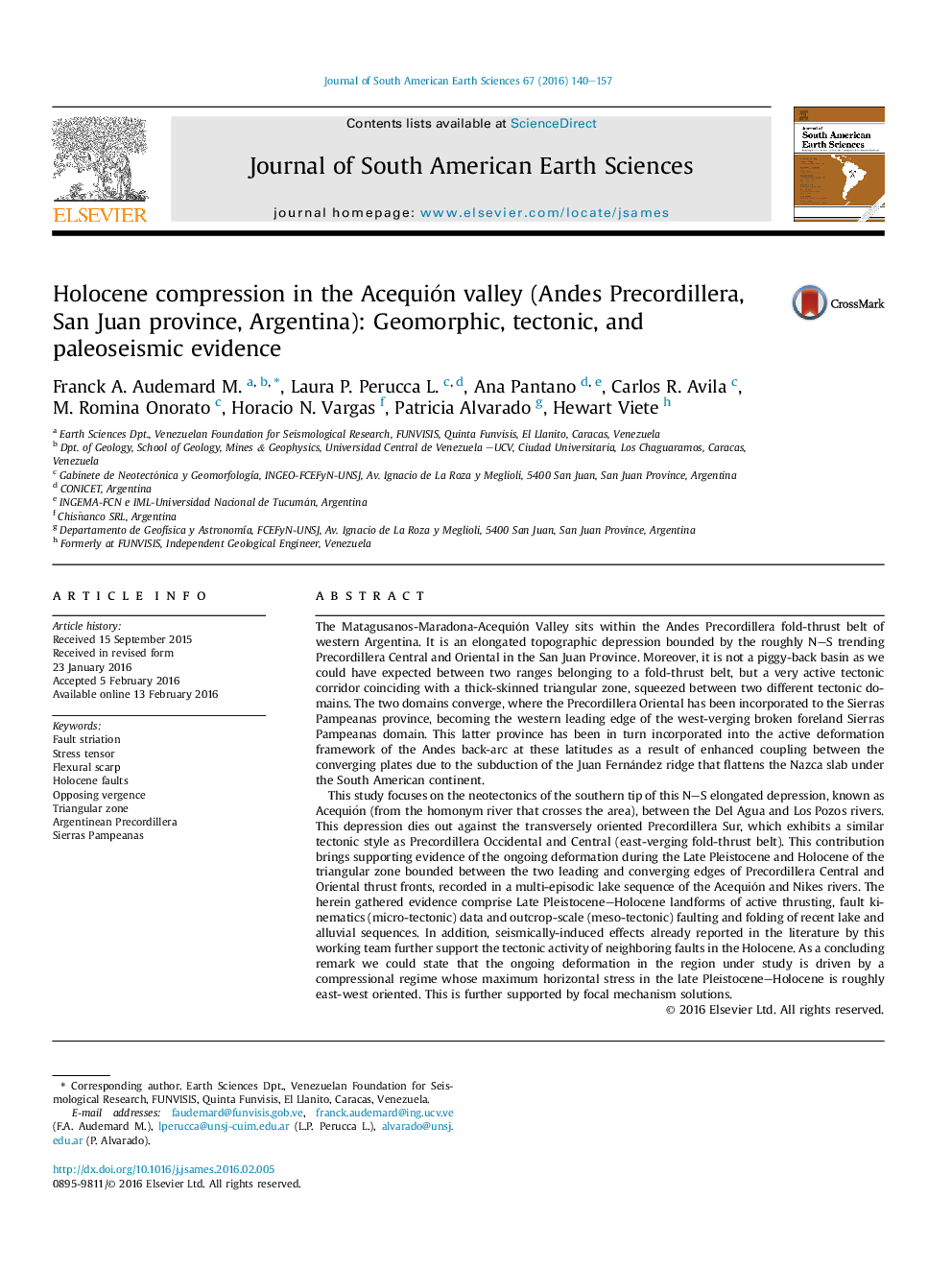| کد مقاله | کد نشریه | سال انتشار | مقاله انگلیسی | نسخه تمام متن |
|---|---|---|---|---|
| 4682015 | 1635143 | 2016 | 18 صفحه PDF | دانلود رایگان |

• The AV is a triangular zone squeezed between 2 active tectonic styles, being destroyed mostly by the Andean-type deformation.
• Three faults in the AV have had at least a Mw 7.0 or larger earthquake in the Holocene and two to three in post-LGM times.
• A stress inversion to fault-slip data determines that the AV is under an east-west oriented compression in the last 35 ka.
The Matagusanos-Maradona-Acequión Valley sits within the Andes Precordillera fold-thrust belt of western Argentina. It is an elongated topographic depression bounded by the roughly N–S trending Precordillera Central and Oriental in the San Juan Province. Moreover, it is not a piggy-back basin as we could have expected between two ranges belonging to a fold-thrust belt, but a very active tectonic corridor coinciding with a thick-skinned triangular zone, squeezed between two different tectonic domains. The two domains converge, where the Precordillera Oriental has been incorporated to the Sierras Pampeanas province, becoming the western leading edge of the west-verging broken foreland Sierras Pampeanas domain. This latter province has been in turn incorporated into the active deformation framework of the Andes back-arc at these latitudes as a result of enhanced coupling between the converging plates due to the subduction of the Juan Fernández ridge that flattens the Nazca slab under the South American continent.This study focuses on the neotectonics of the southern tip of this N–S elongated depression, known as Acequión (from the homonym river that crosses the area), between the Del Agua and Los Pozos rivers. This depression dies out against the transversely oriented Precordillera Sur, which exhibits a similar tectonic style as Precordillera Occidental and Central (east-verging fold-thrust belt). This contribution brings supporting evidence of the ongoing deformation during the Late Pleistocene and Holocene of the triangular zone bounded between the two leading and converging edges of Precordillera Central and Oriental thrust fronts, recorded in a multi-episodic lake sequence of the Acequión and Nikes rivers. The herein gathered evidence comprise Late Pleistocene–Holocene landforms of active thrusting, fault kinematics (micro-tectonic) data and outcrop-scale (meso-tectonic) faulting and folding of recent lake and alluvial sequences. In addition, seismically-induced effects already reported in the literature by this working team further support the tectonic activity of neighboring faults in the Holocene. As a concluding remark we could state that the ongoing deformation in the region under study is driven by a compressional regime whose maximum horizontal stress in the late Pleistocene–Holocene is roughly east-west oriented. This is further supported by focal mechanism solutions.
Figure optionsDownload as PowerPoint slide
Journal: Journal of South American Earth Sciences - Volume 67, April 2016, Pages 140–157